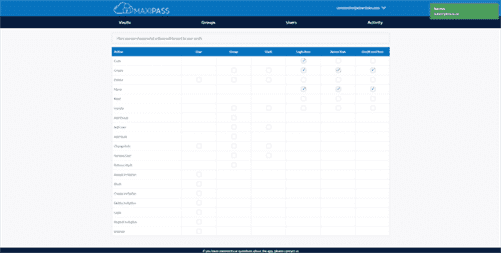Value-based pricing assesses customers’ perceived value of a product, as well as its features and services, and assigns a price to that product based on this data. Value-based pricing is different from cost-plus pricing, which factors the costs of production into the pricing calculation. Companies that offer unique or highly valuable features or services are better positioned to take advantage of the value-based pricing model than companies that chiefly sell commoditized items. However, we do recommend using DCF in conjunction with economic profit to establish benchmarks and reward performance at the business-unit level.

At the corporate level, strategy is primarily about deciding what businesses to be in, how to exploit potential synergies across business units, and how to allocate resources across businesses. In a VBM context, senior management devises a corporate strategy that explicitly maximizes the overall value of the company, including buying and selling business units as appropriate. That strategy should be built on a thorough understanding of business-unit strategies. Line managers and supervisors, for instance, can have targets and performance measures that are tailored to their particular circumstances but driven by the overall strategy. A production manager might work to targets for cost per unit, quality, and turnaround time. At the top of the organization, on the other hand, VBM informs the board of directors and corporate center about the value of their strategies and helps them to evaluate mergers, acquisitions, and divestitures.
Value-Based Pricing
The most important first step in Value-based pricing is to address the mindset change, so that the entire commercial organization starts to think about selling value instead of just selling a product. Value-based pricing is a powerful pricing tool that incorporates information about the value that customers perceive to come from a product, its various features, and related services. While value-based pricing is resource-intensive because it requires gathering and analyzing customer data, it can lead to advantages in sales, elevated price points and customer loyalty, and other benefits. On the other hand, value-based pricing is not a guarantee of sales success.
- Business strategies one and three, on the other hand, allow firms to maximize profits at the expense of customers and suppliers, growing their own value while shrinking others’.
- But if consumed in excess, it becomes more difficult to also eat foods with enough dietary fiber and essential vitamins and minerals and still stay within calorie limits.
- The product must be customer-focused, meaning that any improvements and added features should be based on the customer’s wants and needs.
- When the least productive were closed and output shifted to the most productive facilities, two benefits emerged.
- Regulatory requirements governing Medicare and other government payment programs can be harsh and dangerous for providers that violate prohibitions concerning the government’s payment for medical services.
- Thus, this will provide a benefit of dominating the targeted market for the company, hence, sustaining the segmented customers that the company is targeting.
We accept payments via credit card, wire transfer, Western Union, and (when available) bank loan. Some candidates may qualify for scholarships or financial aid, which will be credited against the Program Fee once eligibility is determined. Please refer to the Payment & Financial Aid page for further information. The applications vary slightly from program to program, but all ask for some personal background information. If you are new to HBS Online, you will be required to set up an account before starting an application for the program of your choice.
Value-Based Selling Focused on Differentiation
Participate actively in managing personal health, and, when faced with care and treatment options, seek assistance in understanding the expected outcomes. Value-based pricing can be applied to a wide range of products, but two of the most common are luxury fashion items and consumer staples such as milk. The video caught their attention and showed them that top management supported the change that was under way. At the front line of management, where financial information is rarely an adequate guide, operating value drivers are the key.
If one sector tanks for a while, the funds in the other sectors can help balance things out and keep them moving in the right direction. When you invest, you have to think long term and wait patiently for your portfolio to grow over decades, not overnight. One problem is the difficulty of measuring a company’s impact—sometimes it’s tough to get accurate information about what a company is or isn’t doing. A company may claim to use clean technology, for example, but who’s in charge of making sure that company follows through on its promise? Because socially responsible investing is so new, there are still lots of kinks to work out. Though the strategy development process must always be based on maximizing value, implementation will vary by organizational level.
Don’t jump into your sales pitch too early.
At the top of the stick is the value that’s been captured by the end consumer, called customer delight. In the middle is the value captured by the firm, called the firm’s margin. At the bottom of the stick is the value captured by the firm’s suppliers, called supplier surplus.
This is the level of goodwill, loyalty, and brand enthusiasm the customer feels after making a purchase, which is typically tied to the value they’ve claimed from the transaction. If an element input validation formula has been defined
for the rate contributor input value, you can view it in the Override
and Defaulting Rules section. For example,
Rate A has minimum value that’s based on Rate B, which has a minimum
value based on Rate A. This situation would result in a runtime error. By default, rates are converted using these predefined
rate conversion formulas. The rate calculation converts each contributor to
the periodicity specified on the rate contributor.
Did you find this article helpful? Share it!
Financial success is one of the more obvious ways to gauge the value of a product or service — so being able to point to how your offering can help in that realm provides a solid basis for effective value selling. The goal with a value-based selling approach is to put the needs of the customer first, guiding them through the sales process to make an informed decision to best suit their needs (ideally, leading to the purchase of your product). This creates anticipation for the positive result having your product will provide in the mind of the customer. As a sales professional, your job is ultimately to sell, but that doesn’t necessarily have to be your main mission. Enter something known as value-based selling (also known as value-added selling) — the process of taking a consultative approach to sales and conveying the value of a product or service along the way.
The small steps you take to make your prospect’s job easier can pay dividends in the long run. Last but certainly not least, make sure you add value each time you engage with your prospect to continue building trust and creating a long-term positive experience. You want them to feel heard and supported each time they interact with you.
Management? Definition.
The team had not even talked to any of the operating managers at the group or business-unit level. Scarcely relevant to the real decision makers, their presentation was a staff-captured exercise that would have no real impact on how the company was run. Instead of value-based management, this company simply had value veneering. The above diagram shows that a cost-plus pricing strategy adds a certain markup, making the price of the item dependent on its cost. The value-based pricing strategy is used on items that demonstrate a level of perceived value much greater than the cost.

It is a way of assessing the impact of different sets of mutually consistent assumptions on the value of a company or its business units. Typical scenarios include what might happen if there is a price war, or if additional capacity comes on line in another country? Thinking about such issues helps management avoid getting caught off guard and brings to life the relationship between strategy and value.
Value-based versus cost-based pricing
Cost refers to how much money goes into producing a product or service, including all of its components. This includes physical costs, such as the various nuts, bolts, and widgets that make up an item, along with non-physical costs, such as utilities and rental space. The value stick is a visual representation of a value-based pricing strategy’s different components.
Keep a personable approach.
Instead, value-based health care’s focus on better health outcomes aligns clinicians with their patients. Measured health outcomes demonstrate clinicians’ ability to achieve results with patients and families and drive improvement in the results that matter most to both patients and manufacturing based definition of quality clinicians. This intrinsic motivation is often missing in the health care system, where clinicians are directed to spend countless hours on tasks that do not impact their patients’ health. There are four essential management processes that collectively govern the adoption of VBM.
See success with value-based selling.
It is anticipated that changes that emphasize the provision of high-value health care goods and services can contribute in a meaningful way to modifying the U.S. health care system. An example of such a change is the VBC, which is already in use in certain sectors of the health care economy. Let’s say the rep’s platform offers executives comprehensive visibility into their construction managers’ project management.


Deixe uma resposta
Quer juntar-se a discussão?Sinta-se à vontade para contribuir!